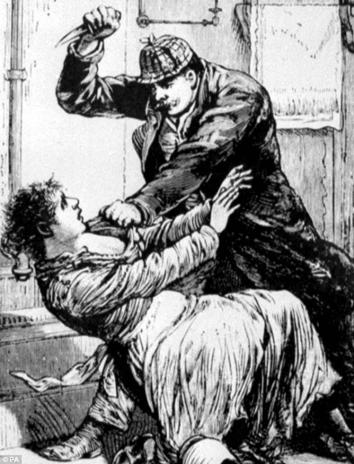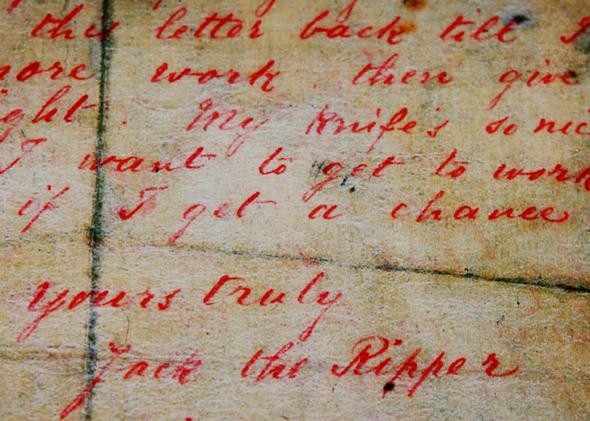This article originally appeared in Pacific Standard.
The nights in Whitechapel were thick with London’s industrial soot and cloacal fumes from the gutter, and Saucy Jacky was on the prowl. “Respectable” women were abed and largely avoided Whitechapel to begin with. Wine-drunk prostitutes, meanwhile, were ready at hand, and Jack the Ripper had a very quick hand indeed. For a time Scotland Yard believed that the Ripper was a trained surgeon—one way of explaining the killer’s fondness for excising his victims’ organs (heart, kidneys, uterus). Throughout the investigation, police surgeon Thomas Bond registered vehement opposition to this hypothesis. Shoving blunt objects into a prostitute’s vagina is hardly evidence of medical training.
Jack the Ripper was the first celebrity serial killer and inspired copycats on two continents. Still, no one has adequately established his identity. Titillating conjectures include Lewis Carroll, the Duke of Clarence, Mary Pearcey, Prime Minister William Gladstone, and the painter Walter Sickert. Casebook.org notes that 500 people were suspected or accused at one time or another.
Now, with breathless triumphalism and a new book to sell, Russell Edwards has unveiled “incontrovertible” evidence that the Ripper was Aaron Kosminski, a 23-year-old Polish émigré and lapsed hairdresser who had left the Continent in the early 1880s, fleeing pogroms like so many fellow Jews. Scotland Yard had held Kosminski for questioning, treating him as a prime suspect in the Whitechapel murders before releasing him for lack of evidence. There were pressing political concerns, as well—Gen. Sir Charles Warren, chief of the Metropolitan Police, was keenly aware that laying final blame on a Whitechapel Jew would precipitate “race riots” in an already fractured immigrant neighborhood. Warren resigned on Nov. 12, 1888, shortly after the Ripper killed Mary Jane Kelly (his fifth). From the next day’s New York Times:
It is understood that this action is due to the severe criticisms that have been made upon his efficiency recently in connection with the Whitechapel murders. In the House of Commons this afternoon Mr. Matthews, the Home Secretary, announced the resignation of Gen. Warren as Chief of the Metropolitan Police. The announcement was greeted with cheers.
Edwards’ “new” evidence is a shawl supposedly retrieved from the Ripper’s penultimate victim, Catherine Eddowes. Edwards purchased the shawl for an undisclosed price at auction in Bury St. Edmunds in Suffolk. From the auction catalog:
The owner is a descendant of Police Sergeant Amos Simpson, who was the first on the crime scene when Catherine was butchered in Mitre Square near Aldgate. Forensic testing last year for a TV documentary was unable to prove conclusively that the shawl belonged to her.
At Edwards’ behest, Dr. Jari Louhelainen, a molecular biologist at Liverpool John Moores University, used mitochondrial DNA from one of Eddowes’ descendants to identify the blood as hers. The two men then discovered an additional genetic mother lode—a semen stain on the shawl that matches mitochondrial DNA from one of Kosminski’s descendants. Edwards is treating Eddowes’ shawl like Monica Lewinsky’s blue dress: biologically verifiable proof of guilt.
But there are problems. The shawl is 126 years old, its provenance remains semi-conjectural, and, predictably, there is no full account of the chain of custody. Before the 2007 auction, the shawl was in the possession of David Melville-Hayes, a descendant of Sgt. Amos Simpson who (per the Daily Mirror) “accompanied Catherine’s body to the morgue and was given the material for his seamstress wife.” His wife was less than grateful: “Horrified by the blood-soaked wrap, Mrs. Simpson never wore or even washed it, but stored it away where it became a family heirloom to be passed down the generations until it was sold to Mr. Edwards.”
Of course, it is impossible to prove that the shawl was never washed and quite possible that the fabric was contaminated before—or during—the DNA testing. Moreover, in his zeal to keep the lid on things until the book came out, Edwards has neither sought nor allowed a secondary round of genetic tests from an impartial third party. As Inquisitr points out:
Often, duplicate testing is done in different laboratories with different scientists to make sure that the same conclusion is reached. As far as anyone knows, the DNA testing proving that Jack the Ripper was Kosminski has not been replicated in any other independent laboratory.

Courtesy of Polize Gazette/Wikimedia Commons
Pioneering British geneticist Sir Alec Jeffreys—essentially the godfather of DNA fingerprinting—calls Edwards’ theory “an interesting but remarkable claim that needs to be subjected to peer review, with detailed analysis of the provenance of the shawl and the nature of the claimed DNA match with the perpetrator’s descendants and its power of discrimination; no actual evidence has yet been provided.”
The shawl, meanwhile, presents methodological problems. I solicited the opinion of Ruth Richardson, a scholar of 19th-century social history and certain of its more gruesome aspects. Over email, Richardson writes:
Although there might well be DNA on the clothing, there was absolutely no notion of forensic cleanliness at the time. I would want far more proof than that; it would have to be on the clothes of more than one of the victims at the very least. But if this man’s DNA really was found on the shawl, and the shawl really was the victim’s, then the story might be real news. I think the jury will be out until more data is on the table.
Still, Edwards’ confidence appears unflappable.
I’ve got the only piece of forensic evidence in the whole history of the case. I’ve spent 14 years working on it, and we have definitively solved the mystery of who Jack the Ripper was. Only non-believers that want to perpetuate the myth will doubt. This is it now—we have unmasked him.
Not that Kosminski isn’t a promising candidate. During the original investigation, Chief Inspector Donald Swanson of the Criminal Investigation Department characterized Kosminski as a pathological and potentially violent misogynist. In 1891, the Pole was straitjacketed and sent to Colney Hatch Lunatic Asylum; he would live in such asylums until his death in 1919.
Nonetheless, a proprietary impulse keeps Edwards from seeking any outside analysis of the DNA. Edwards began his Ripper investigation after seeing Johnny Depp in From Hell, a dubious source of scholarly inspiration to say the least. It isn’t clear, not to me anyway, how much the Daily Mail paid Edwards for its “world exclusive.” Soon, perhaps, the world will have its own crack at Saucy Jacky; let us hope that someday the author will let a second forensic expert inspect the shawl and its sordid fluids.
